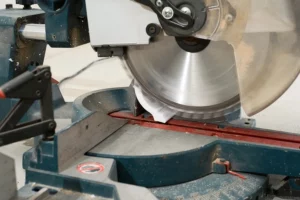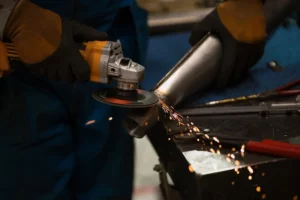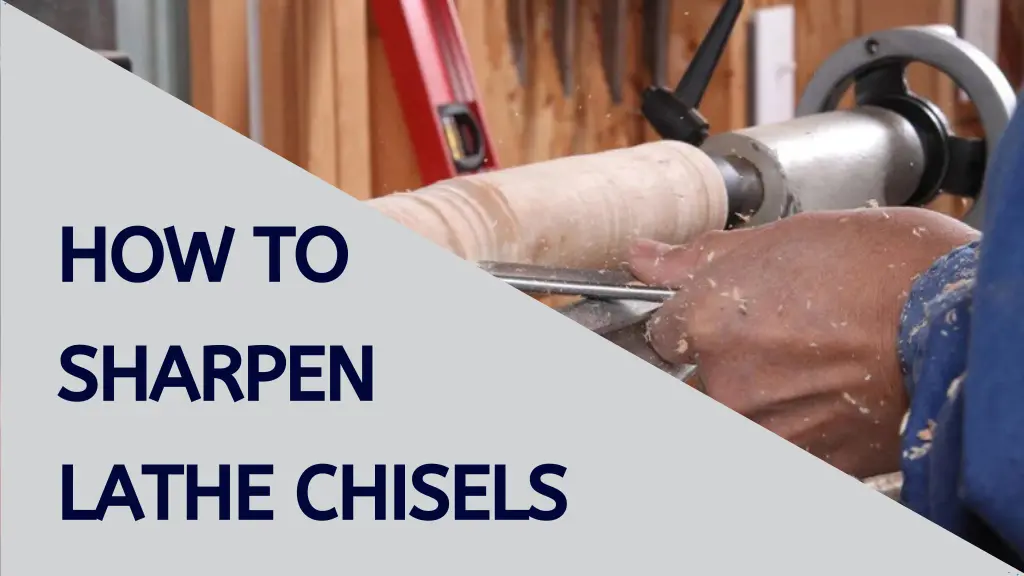Knowing the purpose of each chisel will help you conform your stropping approach to suit the tool’s intended function. Woodturning is a captivating skill that requires perfection, tolerance, and, most importantly, how to sharpen lathe chisels. Invest time in stropping, and you will find that the results in your woodturning trials are well worth the trouble.
The need for sharp lathe tools in woodturning is essential, as sharp tools have multitudinous benefits that directly impact the quality of the turned objects and the overall woodturning experience. Whether you are a seasoned woodturner or a neophyte looking to hone your craft, the key to achieving clean and precise cuts lies in maintaining razor-sharp lathe chisels. In this companion, we will into the essential ways and ways to edge lathe chisels to perfection.
Understanding Lathe Chisels
Before we embark on the stropping process, it’s pivotal to understand the different types of lathe chisels and their separate uses. Lathe chisels come in colorful shapes and sizes, each designed for specific turning tasks. Common types include spindle ruptures, coliseum ruptures, parting tools, and disposal chisels.
The best way to sharpen lathe chisels

The stylish way to sharpen lathe chisels frequently depends on particular preferences, the specific requirements of your woodturning systems, and the tools and outfits you have available. Still, then’s a comprehensive companion to a largely effective and extensively habituated system using a bench grinder
Techniques and Tools Required
- Bench Grinder: Ensure your bench grinder is securely mounted on a stable face. This will be the primary tool for shaping and stropping your lathe chisels.
- Safety Gear: Prioritise safety by wearing safety spectacles, a dust mask, and protection. The grinding process generates sparks and can produce airborne particles that may be dangerous.
- Grinding Wheels use two grinding buses, one with a coarse grit ( around 60- 80) for original shaping and another with a fine grit ( around 120- 180) for honing and enriching the edge.
- Angle Setting Jig While voluntary, an angle setting jig can help maintain a harmonious bevel angle, especially for newcomers.
- Cooling System To help prevent overheating and damage to the temper of the sword, have a vessel of water near or use a water-cooled stropping system.
How to sharpen lathe chisels – Step by Step

Safety First
Put on your safety gear, including safety spectacles, a dust mask, and observance protection.
Check the Chisel
Examine the lathe chisel for any damage or irregularities. ensure there are no hacks, chips, or excessive wear and tear on the cutting edge.
Setup the Grinder
Secure the bench grinder and acclimate the tool rest to the asked bevel angle. Common bevel angles for lathe chisels range from 25 to 30 degrees.
Coarse fortitude Grinding
Begin with the coarse fortitude wheel. Hold the chisel forcefully against the grinding wheel at the established bevel angle. Move the chisel back and forth, icing indeed grinding. Cool the chisel in water periodically to help overheating.
Fine fortitude Grinding
Switch to the fine fortitude wheel for a smoother finish. Repeat the grinding process, maintaining the same bevel angle. This step refines the edge and removes any churrs.
Honing
For a razor-sharp edge, use a honing companion and pass the chisel over diamond-stropping monuments or honing monuments. This step helps upgrade the edge and exclude any remaining defects.
Test the Edge
After stropping, test the edge by making many light cuts on a scrap piece of wood. However, you’ve successfully stoned it, If the chisel cuts fairly and easily.
Stropping( Optional)
For an extra level of redundant sharpness, consider sharpening your chisel using a leather strop. Apply a small amount of honing emulsion to the strop and draw the chisel across it with a consistent motion. This process, known as stropping, polishes the edge and results in an exceptionally sharp finish.
Regular Conservation
Incorporating regular touch-ups into your routine is essential for maintaining optimal sharpness in your tools. By practising frequent honing and performing occasional grinding, you can prolong the life of your tools, ensuring consistent performance and reducing the need for premature replacements.
Tips for Flawless Sharpening
- Thickness is crucial. Maintain a harmonious bevel angle throughout the stropping process to ensure invariant results.
- Help with overheating. Periodically dip the chisel in water or use a water-cooled system to help prevent overheating and save the temper of the sword.
- Trial with Angles Depending on the wood and the task at hand, you may want to experiment with different bevel angles to find the one that suits your requirements stylishly.
- Regular examination: Regularly check your chisels for any signs of wear and tear or damage and address issues instantly to ensure optimal performance.
Conclusion
Learning the art of how to sharpen lathe chisels begins with the proper care and conservation of your tools, and at the heart of this is the sharpening of lathe chisels. Invest time in stropping, and you will find that the results in your woodturning trials are well worth the trouble. By following this way and ways, you can ensure that your chisels are always in peak condition, ready to attack any woodturning design with perfection and finesse.
FAQ’s
How frequently should I edge my lathe chisels?
Regularly touch up your lathe chisels. Frequent honing and occasional grinding are recommended to maintain optimal sharpness and protract the life of your tools.
Can I use a hand-held stropping system rather than a bench grinder?
Yes, hand-held systems like diamond stropping monuments are feasible druthers to bench grinders. The choice depends on particular preference, tool vacuity, and asked perfection.
Is it necessary to use a water-cooled system during grinding?
While not obligatory, a water-cooled system helps dissipate heat generated during grinding, precluding damage to the temper. However, dip the chisel in water periodically to cool it, If using a regular bench grinder.
Can I skip honing and stropping and still achieve a sharp edge?
While grinding alone can yield a sharp edge, honing and sharpening upgrade the edge, contributing to a smoother finish and added sharpness. Including these ways in your routine enhances the slicing performance of your lathe chisels.




